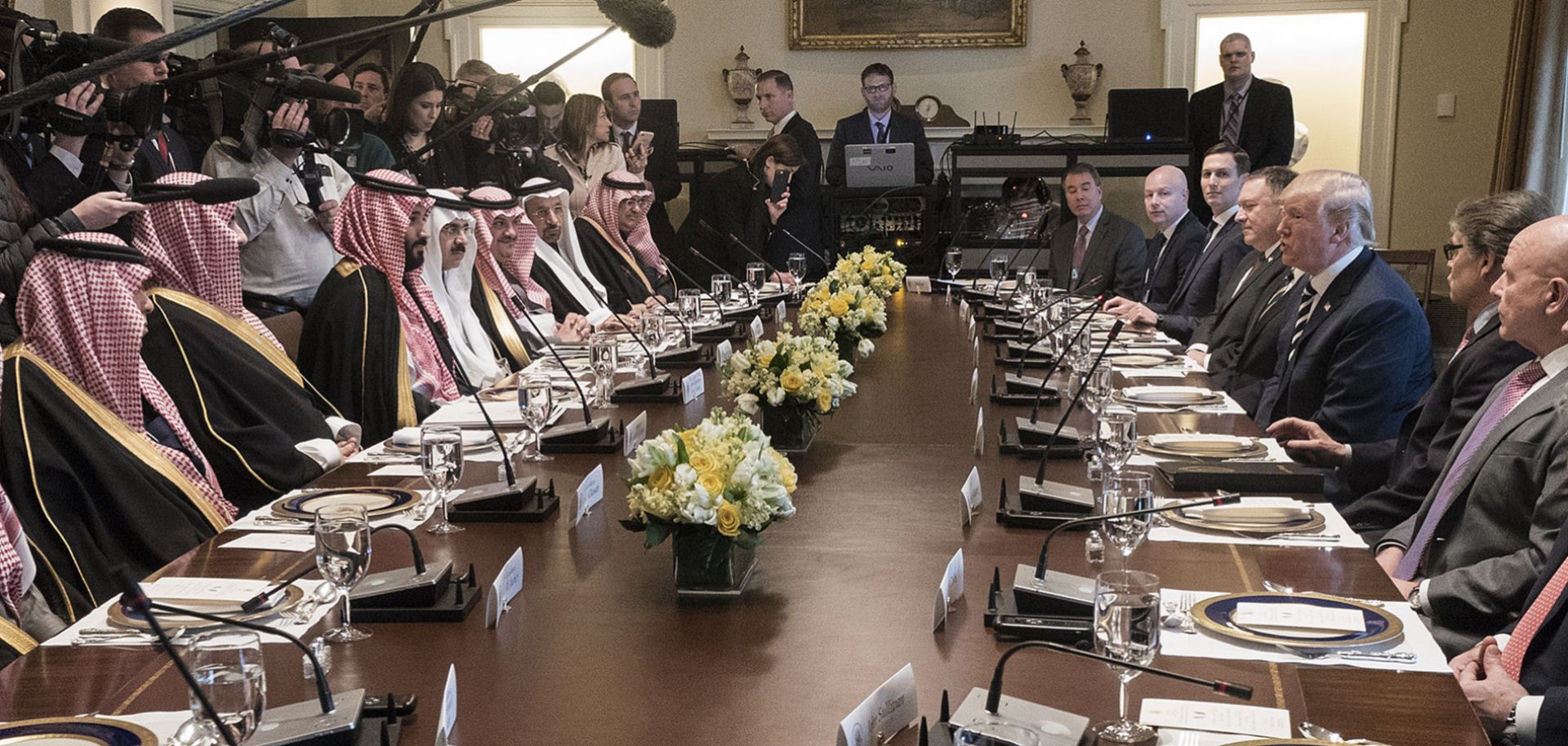COLUMNS
Why the U.S. and Saudi Arabia Are Destined to Diverge

Mar 14, 2019 | 09:30 GMT

President Donald Trump holds a working lunch with Crown Prince Mohammed bin Salman of Saudi Arabia in the Oval Office at the White House on March 20, 2018.
(KEVIN DIETSCH - Pool/Getty Images)
Highlights
- The relationship between Saudi Arabia and the United States has long been a volatile one, but that volatility will become more frequent in the coming decades, outgrowing some of the personal relationships that provide its framework today.
- U.S.-Saudi cooperation has always been based on common interests rather than common needs. While those interests have changed over time, they are now entering a phase in which they will not be as closely aligned.
- The shale revolution and its effect on global energy markets is driving Saudi Arabia ever-closer to Russia and China economically and politically.
- An ascendant China will force the United States to complete its pivot toward Asia, with a resulting reduction in the attention it pays toward the Middle East. More and more often, Riyadh will struggle to get on the same page as Washington in balancing against China.
Subscribe Now
SubscribeAlready have an account?
